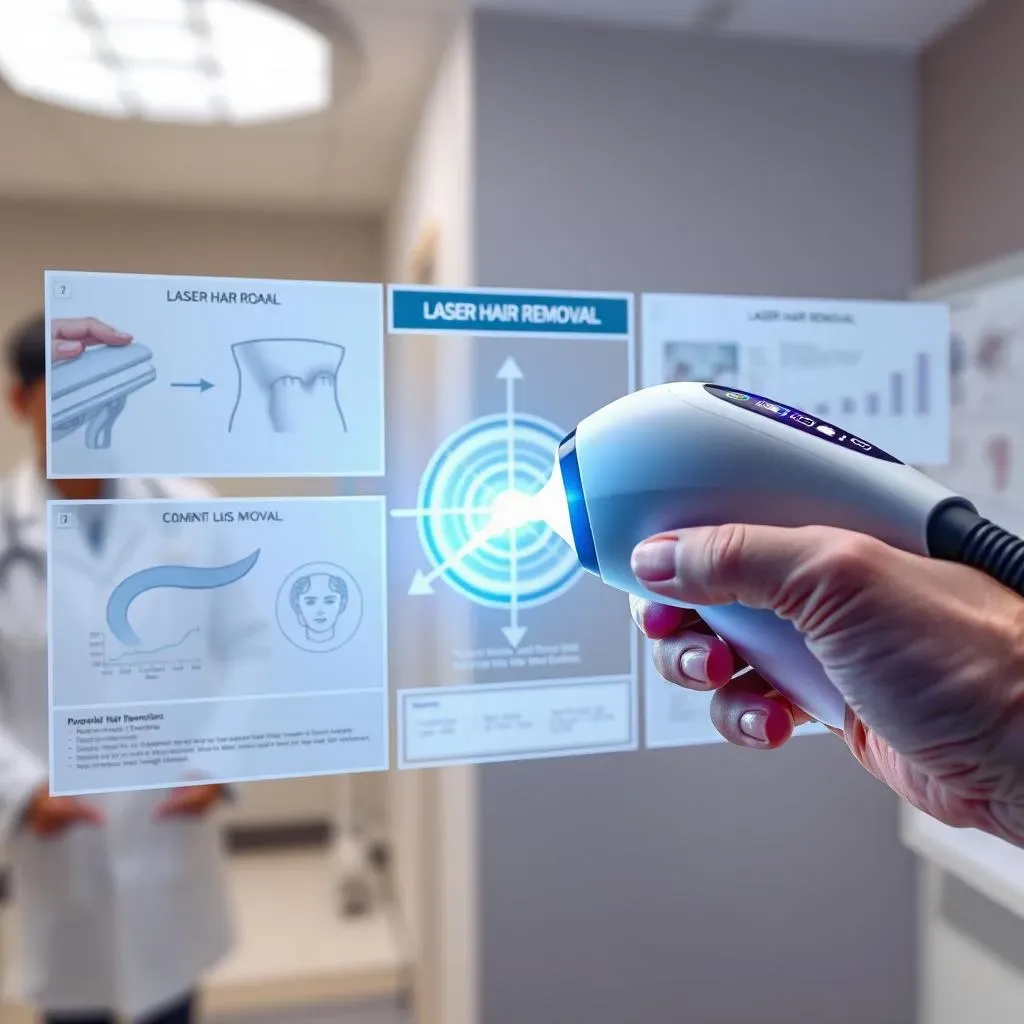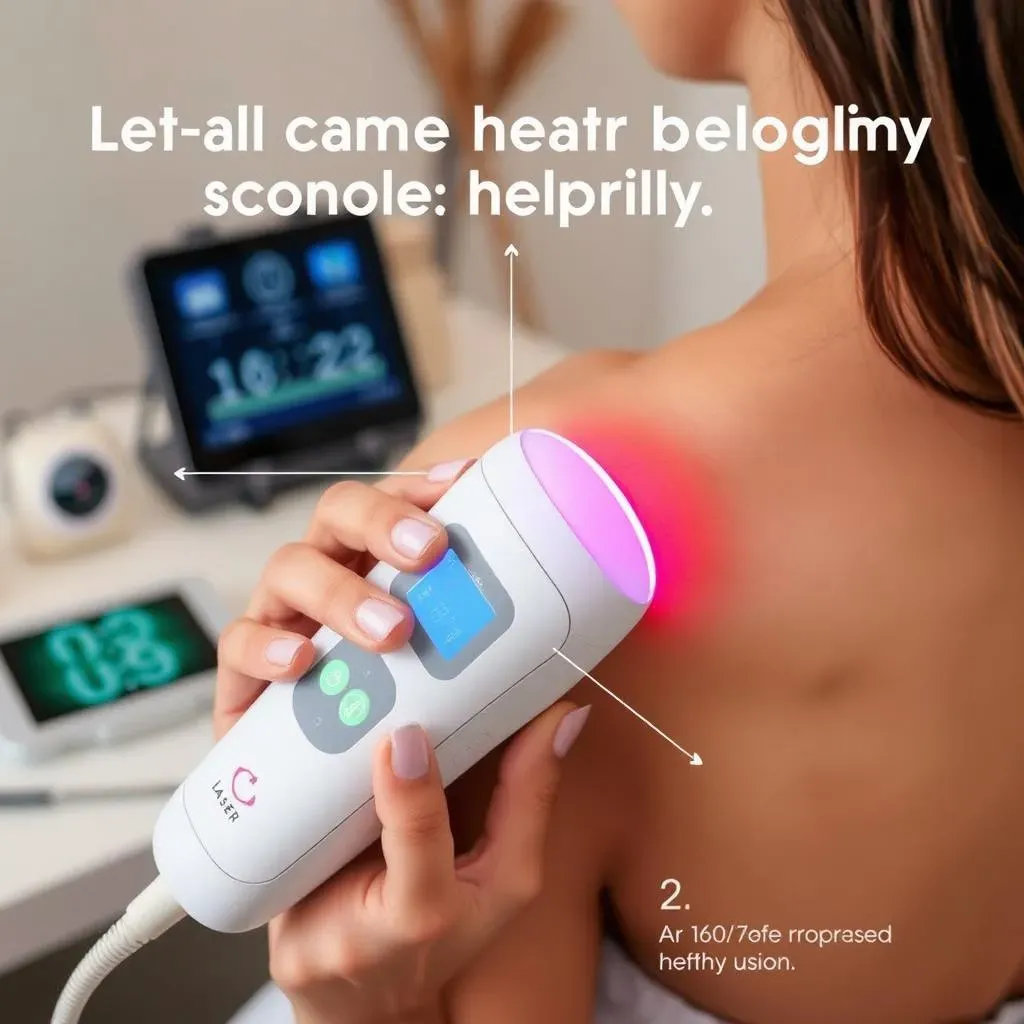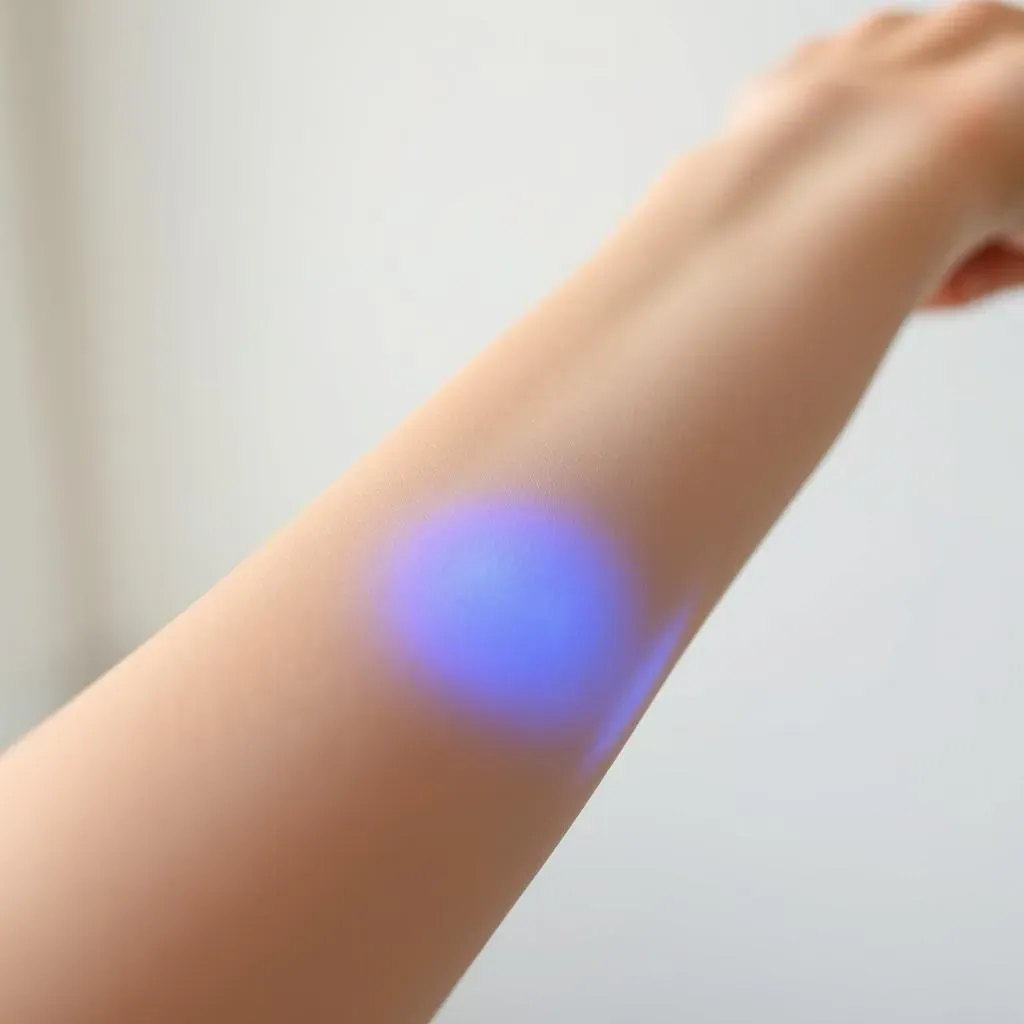Table of Contents
Are you tired of the hassle and expense of traditional hair removal methods? Look no further than at-home laser hair removal, a revolutionary technology that's changing the game for those seeking smooth, fuzz-free skin. With the right tips for at home laser hair removal, you can achieve professional-grade results from the comfort of your own home. But before you start, it's essential to understand how laser hair removal works and choose the right device for your skin and hair type. In this article, we'll delve into the world of at-home laser hair removal, exploring the most effective tips for at home laser hair removal, precautions to ensure safe use, and expert advice on maximizing results. Whether you're a seasoned user or just starting out, our comprehensive guide will walk you through every step of the journey, helping you to unlock the full potential of at-home laser hair removal and say goodbye to unwanted hair for good.
Understanding How Laser Hair Removal Works

Understanding How Laser Hair Removal Works
The Science Behind Laser Hair Removal
Laser hair removal is a non-invasive cosmetic procedure that uses a laser to target and remove unwanted hair. The process works by emitting a beam of light that is absorbed by the pigment in the hair follicle, damaging the follicle and preventing future hair growth. This technology has been widely used in professional settings for years, but with advancements in technology, at-home laser hair removal devices have become increasingly popular.
The key to laser hair removal's effectiveness lies in its ability to selectively target the hair follicle while leaving the surrounding skin intact. This is achieved through the principle of selective photothermolysis, where the laser emits a specific wavelength of light that is absorbed by the melanin in the hair, causing thermal damage to the follicle. As a result, the hair falls out, and the follicle is prevented from producing new hair.
Device Type | Wavelength | Effectiveness |
|---|---|---|
Diode Laser | 800-980 nm | Highly effective for most skin types |
Alexandrite Laser | 755 nm | Best for lighter skin tones |
Nd:YAG Laser | 1064 nm | Suitable for darker skin tones |
How At-Home Devices Compare to Professional Treatments
While at-home laser hair removal devices have become more powerful and effective, they still differ from the high-powered lasers used in professional settings. Professional lasers are typically more potent, allowing for faster and more efficient treatments. However, at-home devices have the advantage of convenience and cost-effectiveness, making them an attractive option for those who want to remove hair in the comfort of their own homes.
It's essential to note that at-home devices may require more sessions to achieve the same results as professional treatments. Additionally, they might not be as effective for individuals with certain skin tones or hair types. Despite these limitations, many users have reported significant reductions in hair growth after using at-home laser hair removal devices.
- Cost-effective compared to professional treatments
- Convenience of treating at home
- Less powerful than professional lasers
- May require more sessions
- Not suitable for all skin tones or hair types
Preparing for At-Home Laser Hair Removal
Before starting your at-home laser hair removal journey, it's crucial to prepare your skin and hair properly. This includes avoiding waxing, tweezing, and depilatory creams for at least a month before treatment, as these methods can interfere with the laser's ability to target the hair follicle. Shaving the area is recommended, but be sure to use a gentle shaving cream and avoid nicks and cuts.
It's also important to choose the right device for your skin and hair type. Consider factors such as the device's wavelength, fluence, and pulse duration to ensure you're getting the most effective treatment for your needs.
Effective Tips for AtHome Laser Hair Removal

Effective Tips for AtHome Laser Hair Removal
Setting Yourself Up for Success
Before you begin your at-home laser hair removal journey, it's essential to set realistic expectations. Understand that results may vary depending on your skin tone, hair color, and the device you're using. It's also crucial to commit to multiple sessions, as laser hair removal is a process that requires patience and consistency. Typically, 3-6 sessions spaced 4-6 weeks apart are needed to achieve optimal results.
To get the most out of your treatments, ensure your skin is clean and free of lotions, creams, and makeup. Remove any jewelry and ensure the area is shaved, as this helps the laser target the hair follicle more effectively. It's also recommended to wear protective eyewear during treatment to prevent any potential damage to your eyes.
Session | Interval | Expected Results |
|---|---|---|
1-2 sessions | 4-6 weeks | Initial hair reduction, some regrowth |
3-4 sessions | 4-6 weeks | Noticeable reduction, slower regrowth |
5-6 sessions | 4-6 weeks | Significant reduction, minimal regrowth |
Tips for Effective Treatment
For optimal results, it's vital to use your at-home laser hair removal device correctly. Start by selecting the right energy level for your skin tone and hair type. Begin with a lower setting and gradually increase as needed and tolerated. Be sure to cover the entire treatment area evenly, using slow, overlapping motions to ensure all hairs are targeted.
After each session, apply a soothing moisturizer to calm the skin and reduce any redness or irritation. Exfoliating 2-3 days after treatment can also help remove dead hair follicles and promote smoother skin. Remember, consistency is key, so stick to your treatment schedule and don't get discouraged if you don't see immediate results.
- Start with lower energy levels and increase as needed
- Use slow, overlapping motions for even coverage
- Apply moisturizer after each session
- Exfoliate 2-3 days post-treatment
- Stay consistent with your treatment schedule
Precautions and Considerations for Safe Laser Hair Removal

Precautions and Considerations for Safe Laser Hair Removal
Understanding Skin Tones and Hair Types
When it comes to laser hair removal, not all skin tones and hair types are created equal. Individuals with fair skin and dark hair tend to respond best to laser treatments, as the contrast between skin and hair color allows for more effective targeting of the follicle. Those with darker skin tones or lighter hair colors may require more sessions or different wavelengths to achieve desired results.
It's essential to understand your skin tone and hair type before starting at-home laser hair removal. The Fitzpatrick skin type classification system can help you determine your skin tone, ranging from Type I (very fair) to Type VI (very dark). Knowing your skin type will help you choose the most suitable device and settings for your needs.
Skin Tone | Hair Color | Recommended Device |
|---|---|---|
Fair (Type I-III) | Dark | Diode Laser |
Medium (Type IV) | Medium to Dark | Alexandrite Laser |
Darker (Type V-VI) | Any | Nd:YAG Laser |
Common Side Effects and How to Manage Them
While at-home laser hair removal is generally safe, some users may experience side effects such as redness, itching, or minor burns. These can usually be managed with topical creams or cool compresses. It's crucial to follow the device's guidelines and start with lower energy settings to minimize the risk of adverse effects.
For those with sensitive skin, applying a soothing moisturizer after treatment can help calm the skin. Exfoliating gently a few days after treatment can also aid in reducing the appearance of ingrown hairs or other skin irritations.
- Redness: Apply a cool compress or topical cream
- Itching: Use an anti-itch cream or moisturizer
- Minor burns: Apply a topical antibiotic ointment and cover the area
Precautions for Specific Areas
Certain areas of the body may require extra caution when using at-home laser hair removal devices. The bikini line, for example, is a sensitive area that may require lower energy settings and more frequent breaks to avoid discomfort. The face, particularly the upper lip and chin, can be more prone to ingrown hairs and may require more gentle treatment.
It's also important to avoid using the device near the eyes, as the laser can cause serious eye damage. For areas like the underarms, it's recommended to shave immediately before treatment and avoid using deodorants or perfumes, which can increase the risk of skin irritation.
Area | Precautions | Recommended Settings |
|---|---|---|
Bikini Line | Lower energy, more breaks | Lower fluence, longer pulse duration |
Face | Gentle treatment, avoid ingrown hairs | Lower energy, shorter pulse duration |
Underarms | Shave before treatment, avoid deodorants | Medium energy, standard pulse duration |
Choosing the Right Device for Your Skin and Hair Type

Choosing the Right Device for Your Skin and Hair Type
Understanding Your Skin and Hair
Choosing the right at-home laser hair removal device depends on your skin tone and hair type. It's essential to understand that different devices are suited for different skin tones and hair colors. For example, individuals with fair skin and dark hair tend to respond best to diode lasers, while those with darker skin tones may require Nd:YAG lasers. Understanding your skin tone and hair type will help you select the most effective device for your needs.
The Fitzpatrick skin type classification system is a useful tool for determining your skin tone. It categorizes skin into six types, from Type I (very fair) to Type VI (very dark). Knowing your skin type will help you narrow down the range of devices suitable for your skin. Similarly, understanding your hair type—whether it's coarse, fine, light, or dark—will help you choose a device with the appropriate wavelength and settings.
Skin Tone | Hair Color | Recommended Wavelength |
|---|---|---|
Fair (Type I-III) | Dark | Diode Laser (800-980 nm) |
Medium (Type IV) | Medium to Dark | Alexandrite Laser (755 nm) |
Darker (Type V-VI) | Any | Nd:YAG Laser (1064 nm) |
Features to Consider When Selecting a Device
When choosing an at-home laser hair removal device, there are several features to consider. The wavelength of the laser is critical, as different wavelengths are better suited for different skin tones and hair colors. The fluence, or energy level, of the device is also important, as higher fluence can lead to more effective treatments but may increase the risk of side effects. Pulse duration is another factor, with longer pulses often being more suitable for coarser hairs.
Additional features such as cooling systems, which help reduce discomfort during treatment, and ergonomic designs, which make the device easier to maneuver, can enhance your overall experience. Some devices also come with built-in skin tone sensors, which adjust the energy level based on your skin tone to minimize the risk of side effects.
- Wavelength: Diode, Alexandrite, or Nd:YAG
- Fluence: Adjustable energy levels
- Pulse Duration: Longer for coarser hairs, shorter for finer hairs
- Cooling System: Reduces discomfort during treatment
- Ergonomic Design: Easy to maneuver
- Skin Tone Sensor: Adjusts energy level for safe treatment
Maximizing Results with PostTreatment Care and Maintenance

Maximizing Results with PostTreatment Care and Maintenance
Post-Treatment Skincare: The Key to Enhanced Results
After each laser hair removal session, it's essential to take good care of your skin to maximize the treatment's effectiveness and minimize potential side effects. Applying a soothing moisturizer immediately after treatment can help calm the skin and reduce redness or irritation. Look for a moisturizer rich in aloe vera or chamomile, as these ingredients are known for their calming properties.
Exfoliating your skin 2-3 days after treatment can also aid in removing dead hair follicles and promoting smoother skin. Use a gentle exfoliant containing alpha-hydroxy acids (AHAs) or beta-hydroxy acids (BHAs), which help break down dead skin cells without irritating the skin. Be sure to exfoliate in the direction of hair growth to avoid causing ingrown hairs.
Moisturizer Ingredients | Exfoliant Type | Benefits |
|---|---|---|
Aloe vera, chamomile | Gentle exfoliants with AHAs or BHAs | Soothes skin, reduces redness, promotes smoother skin |
Maintenance and Touch-Ups: Ensuring Long-Term Results
To maintain the results of your at-home laser hair removal treatments, it's crucial to stay consistent with your skincare routine and touch-up sessions as needed. Depending on your hair growth, you may need to perform touch-up sessions every 6-12 weeks to maintain smooth skin. Be sure to adjust your device's settings according to your skin's response and hair regrowth.
In addition to touch-ups, incorporating certain products into your daily routine can help prolong the effects of laser hair removal. Using a hair growth inhibitor, such as a spray or serum containing ingredients like saw palmetto or caffeine, can help slow down hair growth and reduce the need for frequent touch-ups.
- Touch-up sessions every 6-12 weeks
- Adjust device settings as needed
- Use hair growth inhibitors to slow down regrowth
Lifestyle Changes: Supporting Your Laser Hair Removal Journey
While at-home laser hair removal can significantly reduce hair growth, making certain lifestyle changes can further support your journey to smooth skin. Maintaining a healthy diet rich in omega-3 fatty acids, zinc, and biotin can help promote skin health and reduce inflammation. Staying hydrated by drinking plenty of water is also essential for flushinging toxins out of the body and keeping your skin hydrated.
Avoiding excessive sun exposure is crucial, as UV rays can interfere with the laser's effectiveness and increase the risk of side effects. If you must spend time outdoors, be sure to use a broad-spectrum sunscreen with at least SPF 30 and reapply every two hours. By combining these lifestyle changes with your at-home laser hair removal treatments, you can achieve optimal results and enjoy smoother, healthier-looking skin.
Conclusion: Achieving Success with At-Home Laser Hair Removal
Mastering the art of at-home laser hair removal requires patience, dedication, and the right tips for at home laser hair removal. By understanding how the technology works, choosing the right device, and following expert tips, you can enjoy the convenience and cost-effectiveness of professional-grade hair removal in the comfort of your own home. Remember to stay realistic about your expectations, follow safety precautions, and maintain your results with proper post-treatment care. With persistence and the right approach, you'll be on your way to silky-smooth skin and a life free from the hassle of unwanted hair. Visit hairawaybylaser.com for more information on at-home laser hair removal solutions.
